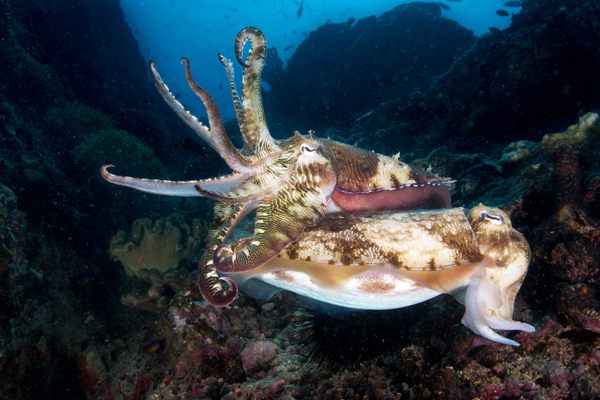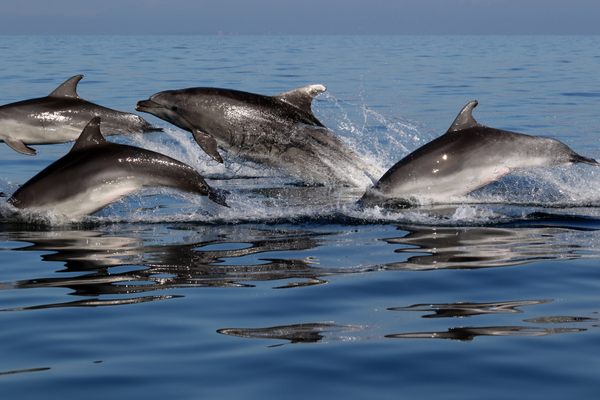How a Female Dolphin May Use Her Vagina to Choose the Father of Her Calf
Inside the weird world of cetacean sex.

There’s an awful lot we don’t know about dolphin and porpoise sex. It mostly takes place underwater (though some versions involve a leap), and at seemingly random intervals. Different species also do it different ways—belly to belly, or perhaps a curious T-formation. But scientists do know that they do it frequently—all year round, regardless of whether the female is fertile, and sometimes multiple times in an hour. But there’s a darker side to cetacean copulation. Because it can be hard for males to find females who are fertile at that moment, sometimes multiple males will aggressively attempt to mate with a single female at the same time. New research, published in Proceedings of the Royal Society B, suggests that female dolphins have an anatomical ability to choose which of these males, if any, ultimately fertilizes her eggs.
For the past seven years, Dara Orbach, a marine mammologist at Dalhousie University in Halifax, Canada, has been studying cetacean sex. To better understand the mechanics of sex in bottlenose and common dolphins, and harbor porpoises, she and her team studied the sex organs of animals that had very recently died to model sexual activity. The scientists inflated the penises with pressurized saline, and then slipped them inside silicone molds of vaginas. They also made CT scans of the experiments to determine how the anatomical parts fit together in different positions. While the common dolphin’s vagina seems relatively straightforward, Orbach found that the porpoise and bottlenose dolphin have extensive vaginal folds and complex spirals that can easily obstruct penetration.
These folds, Orbach told Newsweek, may allow females to control whether a male can successfully inseminate her—if, for example, he seems like a poor paternal pick. With a slight twist of her body, a penis tip could be obstructed from reaching her cervix, and make it far less likely that his sperm could make it to her eggs. “She might be able to control paternity through something as subtle as a small body shift,” Orbach said. This becomes especially relevant in the context of the form of dolphin sex described above, where multiple males may attempt to fertilize a female in quick succession over a period of weeks. These hidden folds may be a secret way for females to wrest control of procreation.
Even with this new information, there’s a lot to be learned about how dolphins and porpoises have sex. If dolphins are somehow aware that particular positions may make conception less likely, there might be other reasons they still do them, Orbach told Science. If not for procreation, she wonders, what leads them to have so much sex? “Is it play? Is it working out hierarchies? Is it establishing dominance? Is it learning?”




















Follow us on Twitter to get the latest on the world's hidden wonders.
Like us on Facebook to get the latest on the world's hidden wonders.
Follow us on Twitter Like us on Facebook